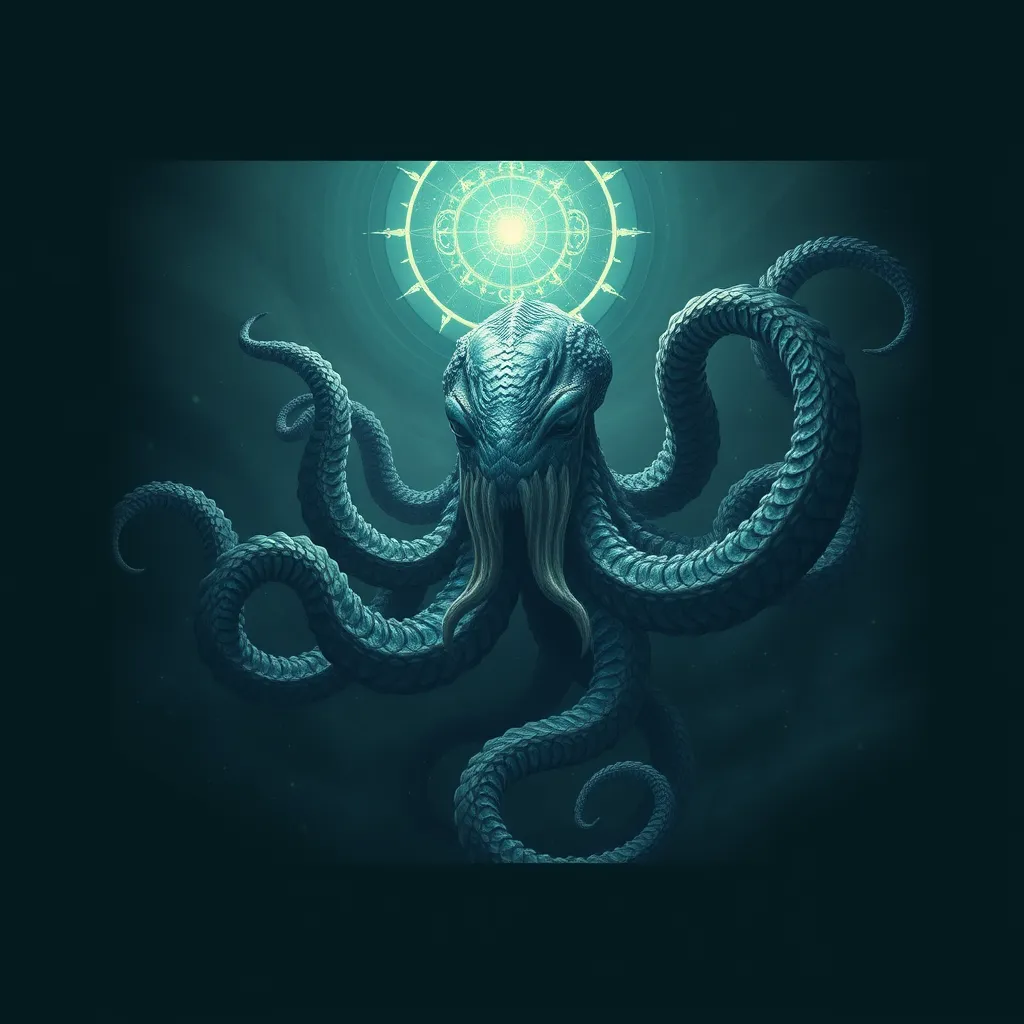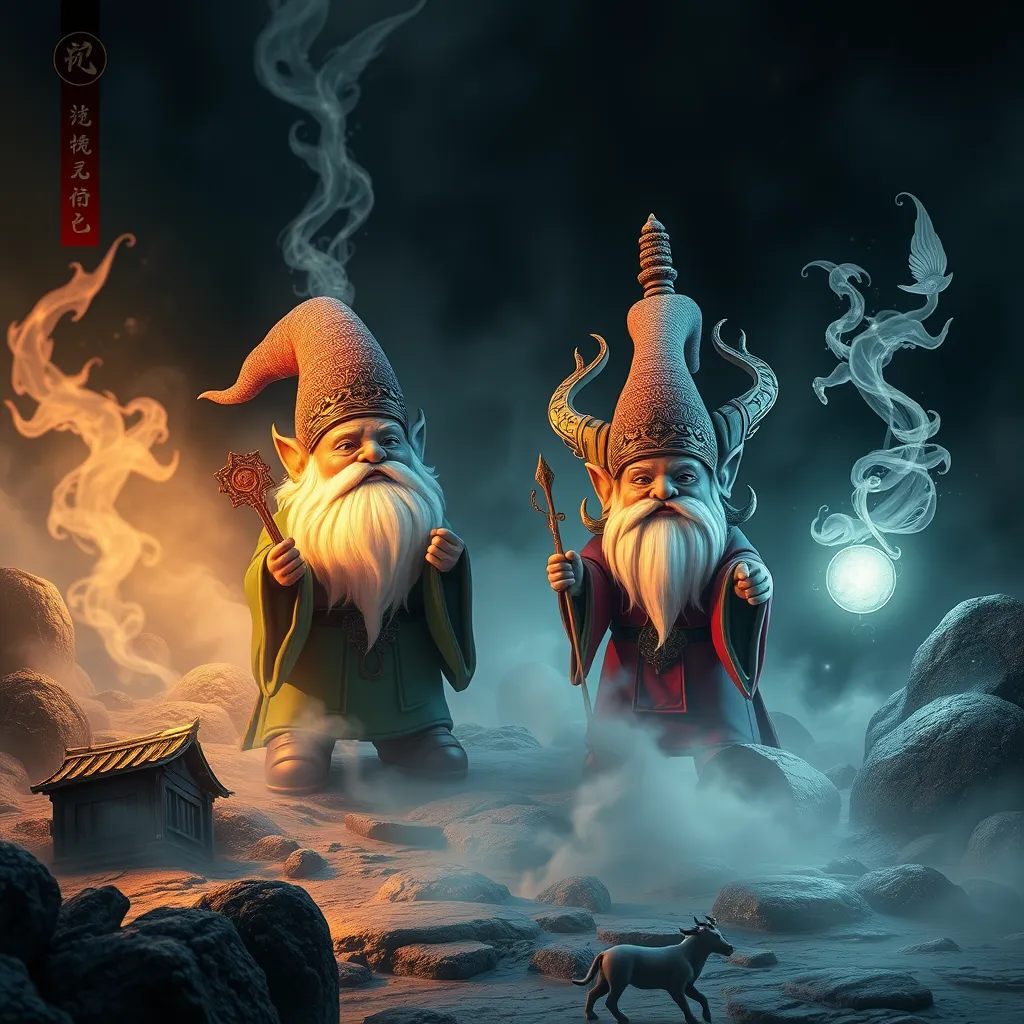The Kraken’s Role in Norse Cosmology: Understanding the Monster’s Place in the Universe
I. Introduction
Norse cosmology is a rich tapestry of myths and legends, intricately woven into the cultural and spiritual identity of the Norse people. It provides a framework for understanding the universe, with its various realms and entities that interact with the natural world. Among these mythological creatures is the Kraken, a colossal sea monster that has captivated imaginations for centuries.
This article aims to explore the role of the Kraken within Norse mythology and cosmology, examining its origins, symbolism, and significance in the context of the Norse worldview.
II. The Origins of the Kraken Myth
The Kraken is often described as a giant cephalopod, resembling a squid or octopus, capable of dragging entire ships beneath the waves. Its origins can be traced back to various historical accounts and literary references throughout the ages.
- Historical accounts: Many sailors’ tales from the 18th and 19th centuries describe encounters with massive sea creatures that could fit the description of the Kraken, often attributing these to the dangers of the unknown ocean.
- Medieval texts: The Kraken appears in medieval sagas and folklore, where it is depicted as both a fearsome beast and a source of awe.
- Evolution of imagery: Over time, the Kraken’s imagery has evolved from a terrifying monster to a more complex symbol encompassing various cultural significances.
III. The Kraken within the Nine Realms of Norse Cosmology
Norse cosmology is structured around nine realms, each interconnected and representing different aspects of existence. Understanding where the Kraken fits into this framework is essential for appreciating its role in Norse mythology.
- Midgard: The Kraken is primarily associated with Midgard, the realm of humans, particularly its vast oceans. The creature embodies the mysteries of the sea, a source of both sustenance and peril for the Norse people.
- Connections to Hel and Niflheim: Some interpretations suggest that the Kraken has ties to Hel, the realm of the dead, and Niflheim, the land of ice and mist, representing the chaotic forces of nature that can lead to destruction and death.
IV. Symbolism of the Kraken in Norse Mythology
The Kraken serves as a potent symbol within Norse mythology, encapsulating various themes and ideas that resonate with the human experience.
- Chaos and the unknown: The Kraken represents the chaotic forces of nature, emphasizing the unpredictability of the sea and the dangers it harbors.
- Fear and respect: Sailors approached the sea with a blend of fear and reverence, recognizing its power and the potential for disaster, which the Kraken personified.
- Monster and guardian: In some narratives, the Kraken is depicted as a guardian of the ocean’s depths, protecting its secrets and treasures, creating a duality that adds complexity to its character.
V. The Kraken and Norse Deities
The interactions between the Kraken and various Norse deities enrich its narrative and highlight its significance within the pantheon of Norse mythology.
- Interactions with gods: The Kraken is often mentioned in tales involving major gods such as Odin and Thor, where it serves as an obstacle or challenge to be overcome.
- Relationship with sea deities: Njord, the god of the sea and winds, is particularly relevant, as the Kraken’s presence may symbolize the unpredictable nature of maritime endeavors.
- Mythological creatures: The Kraken’s encounters with other mythological beings, like Jörmungandr, the Midgard Serpent, further illustrate its significance in the Norse mythological landscape.
VI. The Kraken in Norse Folklore and Storytelling
The Kraken’s presence in Norse folklore and storytelling reveals the cultural importance of this mythical creature in shaping the Viking identity and their relationship with the ocean.
- Oral traditions: Stories about the Kraken were passed down through generations, serving as cautionary tales that warned sailors of the dangers lurking beneath the waves.
- Seafaring legends: The Kraken became a central figure in maritime culture, symbolizing the perils of seafaring and the respect that must be afforded to the mighty ocean.
- Impact on Viking identity: The tales of the Kraken contributed to the Viking worldview, where the sea was both a source of livelihood and a domain of fear and respect.
VII. The Legacy of the Kraken in Modern Culture
The fascination with the Kraken has persisted into modern culture, influencing literature, media, and popular interpretations of the myth.
- Contemporary literature: The Kraken has emerged in various novels and stories, often reimagined as either a monstrous antagonist or a misunderstood creature.
- Popular culture: Films, video games, and artwork have continued to explore the themes associated with the Kraken, ensuring its place in contemporary storytelling.
- Enduring fascination: The Kraken remains a symbol of nature’s mysteries, captivating audiences with its blend of horror, beauty, and intrigue.
VIII. Conclusion
In conclusion, the Kraken occupies a significant place in Norse cosmology, serving as a multifaceted symbol that embodies the mysteries of the ocean and the human experience. From its origins in historical accounts to its portrayal in modern culture, the Kraken remains a powerful reminder of the chaos and beauty found within nature.
The enduring power of myths like the Kraken allows us to reflect on our relationship with the natural world, bridging the gap between ancient beliefs and contemporary understanding. As we continue to explore the mysteries of the sea, the Kraken remains a timeless symbol of nature’s wonders and dangers.




